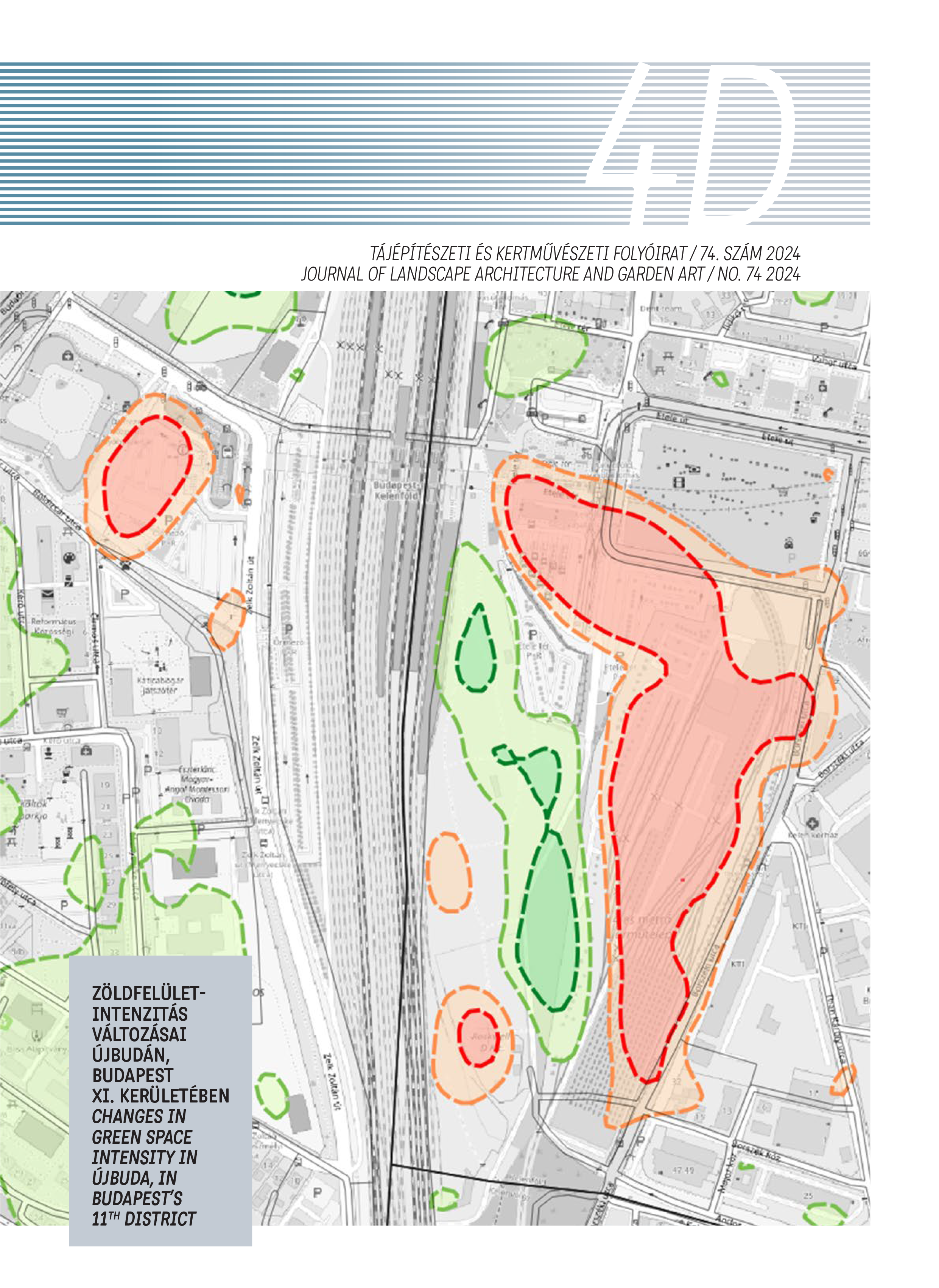Morphological spatial pattern of peri-urban green infrastructure: a case study of Zhengzhou City, China
DOI:
https://doi.org/10.36249/4d.74.5679Keywords:
peri-urban green infrastructure, peri-urban areas, morphological spatial pattern analysis, land useAbstract
Peri-Urban Green Infrastructure (PUGI) possesses significant ecosystem service value yet often remains overlooked. This study employed a composite index and the Jenks natural breaks classification method to identify Peri-Urban Areas (PUAs) in Zhengzhou City, from which PUGI was extracted for morphological spatial pattern analysis (MSPA). The study reveals that the majority of PUAs are situated on the outskirts of urban regions, with a smaller portion located within rural hinterlands. PUGI occupies over half of the land within PUAs, with semi-natural PUGI holding a dominant position, while natural GI primarily serves as connectors. These findings complement theoretical understanding of PUGI’s morphological characteristics and provide insights for planners to optimise PUGI.
References
Sylla M, Lasota T, Szewranski S. Valuing Environmental Amenities in Peri-Urban Areas: Evidence from Poland. Sustainability. 2019;11(3).DOI:https://doi.org/10.3390/su11030570.
Gonçalves J, Gomes MC, Ezequiel S, Moreira F, Loupa-Ramos I. Differentiating peri-urban areas: A transdisciplinary approach towards a typology. Land Use Policy. 2017;63:331-41.DOI:https://doi.org/10.1016/j.landusepol.2017.01.041.
Westerink J, Lagendijk A, Duhr S, Van der Jagt P, Kempenaar A. Contested Spaces? The Use of Place Concepts to Communicate Visions for Peri-Urban Areas. European Planning Studies. 2013;21(6):780-800.DOI:https://doi.org/10.1080/09654313.2012.665042.
Gallent N, Shaw D. Spatial planning, area action plans and the rural-urban fringe. Journal of Environmental Planning and Management. 2007;50(5):617-38.DOI:https://doi.org/10.1080/09640560701475188.
Cervelli E, Pindozzi S. The Historical Transformation of Peri-Urban Land Use Patterns, via Landscape GIS-Based Analysis and Landscape Metrics, in the Vesuvius Area. Applied Sciences. 2022;12(5).DOI:https://doi.org/10.3390/app12052442.
Cattivelli V. Planning peri-urban areas at regional level: The experience of Lombardy and Emilia-Romagna (Italy). Land Use Policy. 2021;103.DOI:https://doi.org/10.1016/j.landusepol.2021.105282.
Hoggart K. The city's hinterland: dynamism and divergence in Europe's peri-urban territories: Routledge; 2016.
Addie JPD. Theorising suburban infrastructure: a framework for critical and comparative analysis. Transactions of the Institute of British Geographers. 2016;41(3):273-85.DOI:https://doi.org/10.1111/tran.12121.
Communication from the Commission to the European Parliament, the Council, the European Economic and Social Committee and the Committee of the Regions. In: Union EFII, editor. Brussels2014. p. 43,
Zhengzhou Bureau of Statistics. Zhengzhou 7th National Census Bulletin (No. 1). 2021, https://tjj.zhengzhou.gov.cn/tjgb/5012681.jhtml
Zhang X, Liu L, Zhao T, Gao Y, Chen X, Mi J. GISD30: global 30-m impervious-surface dynamic dataset from 1985 to 2020 using time-series Landsat imagery on the Google Earth Engine platform. Earth System Science Data Discussions. 2022;14(4):1831-56.DOI:https://doi.org/10.5194/essd-14-1831-2022.
Xu X, Liu J, Zhang S, Li R, Yan C, Wu S. China’s multi-period land use land cover remote sensing monitoring data set (CNLUCC). Resource Environment Data Cloud Platform2018,
Chen Z, Yu B, Yang C, Zhou Y, Yao S, Qian X, et al. An extended time series (2000–2018) of global NPP-VIIRS-like nighttime light data from a cross-sensor calibration. Earth System Science Data. 2021;13(3):889-906.DOI:https://doi.org/10.7910/DVN/YGIVCD.
National Bureau of Statistics of China. Bulletin of the Seventh National Census. 2021, http://www.stats.gov.cn/tjsj/
Freudenberg M. Composite indicators of country performance: a critical assessment. OECD Science, Technology and Industry Working Papers. 2003;16.DOI:https://doi.org/10.1787/405566708255.
Jenks GF. The data model concept in statistical mapping. International yearbook of cartography. 1967;7:186-90,
Soille P, Vogt PJPrl. Morphological segmentation of binary patterns. 2009;30(4):456-9.DOI:https://doi.org/10.1016/j.patrec.2008.10.015.
Lin BB, Philpott SM, Jha S, Liere H. Urban agriculture as a productive green infrastructure for environmental and social well-being. Greening cities: Forms functions2017. p. 155-79.
Rolf W. Transformation pathways towards sustainable urban development by the inclusion of peri-urban farmland in green infrastructure strategies. Landscape Online. 2021:96-.DOI:https://doi.org/0000-0001-7040-034X.
Tóth A, Timpe A. Exploring urban agriculture as a component of multifunctional green infrastructure: Application of figure-ground plans as a spatial analysis tool. Moravian Geographical Reports. 2017;25(3):208-18.DOI:https://doi.org/10.1515/mgr-2017-0018.
Downloads
Published
Issue
Section
License
Copyright (c) 2025 Zhen Shi, Liu Manshu, Wang Xinyu, Filepné Kovács Krisztina

This work is licensed under a Creative Commons Attribution-NonCommercial-NoDerivatives 4.0 International License.
A folyóirat Open Access (Gold). Cikkeire a Creative Commons 4.0 standard licenc alábbi típusa vonatkozik: CC-BY-NC-ND-4.0. Ennek értelmében a mű szabadon másolható, terjeszthető, bemutatható és előadható, azonban nem használható fel kereskedelmi célokra (NC), továbbá nem módosítható és nem készíthető belőle átdolgozás, származékos mű (ND). A licenc alapján a szerző vagy a jogosult által meghatározott módon fel kell tüntetni a szerző nevét és a szerzői mű címét (BY).







